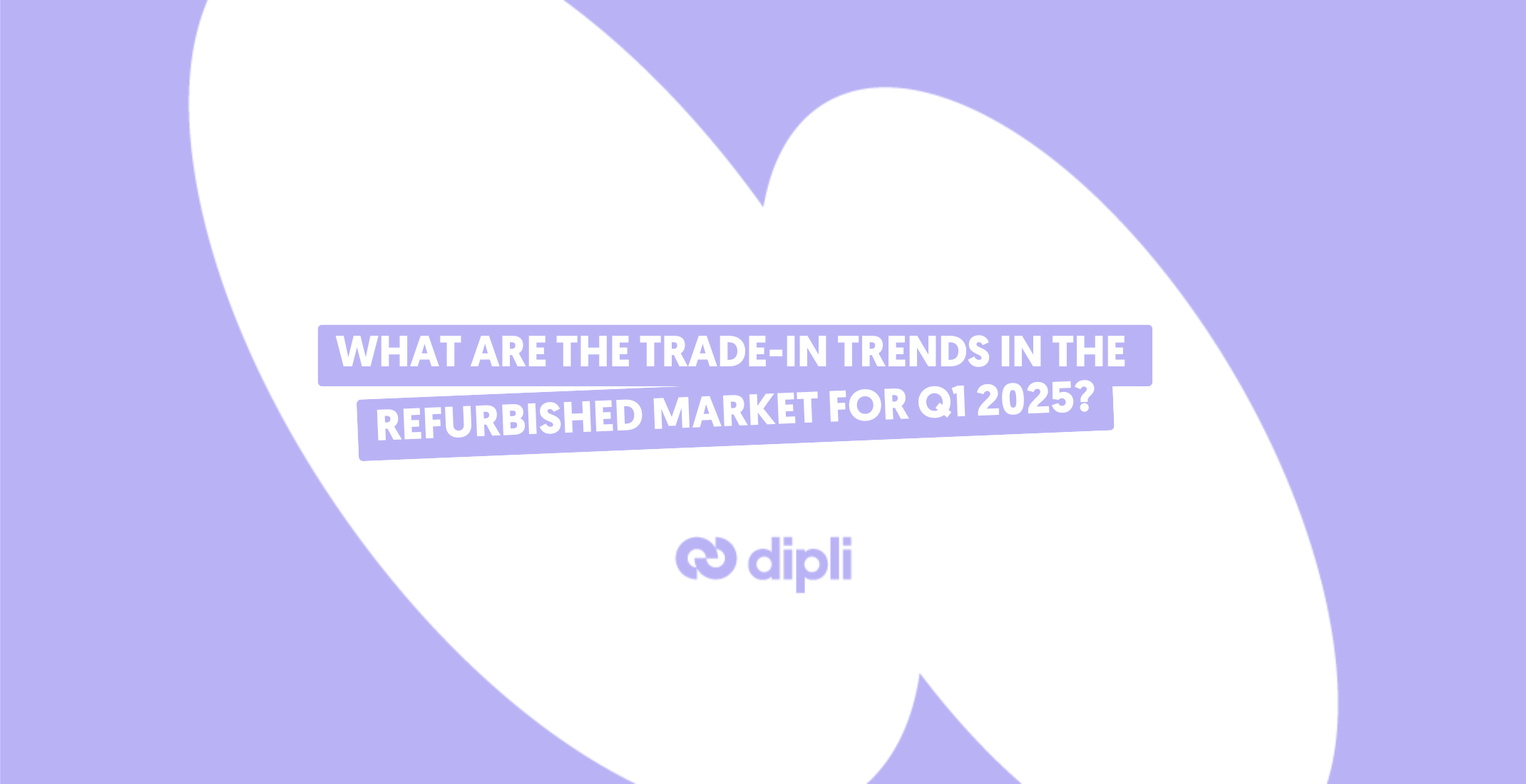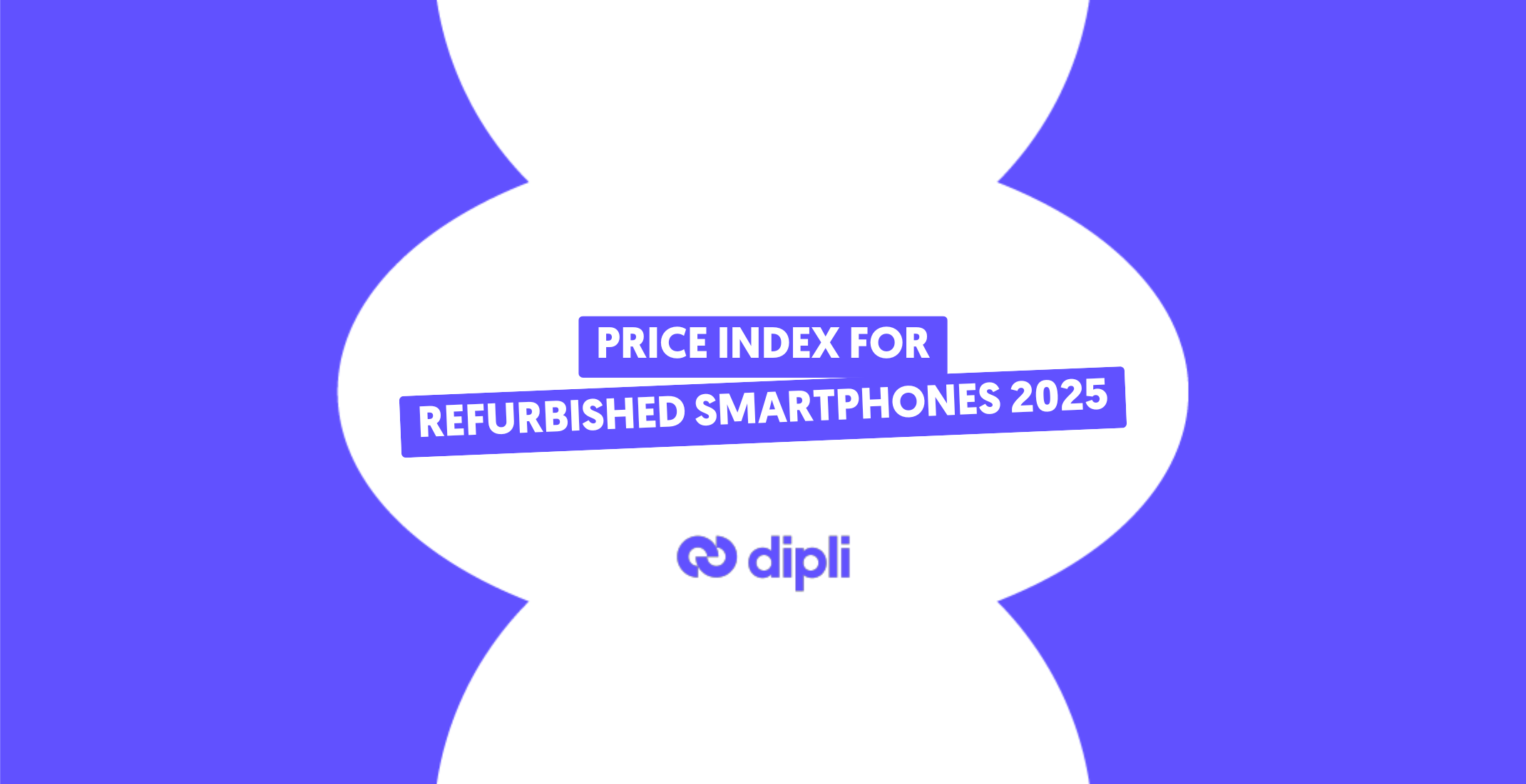Q1 2025 mobile trade-in insights: trends, challenges and future opportunities
27/05/2025
0 comments

Q1 2025 marks an interesting moment for the mobile trade-in and the refurbished market, since these two markets are facing new evolutions, innovations and players.
A deeper look at global and European market dynamics reveals new opportunities for telcos, corporates, distributors and OEMs to optimize trade-in solutions and fuel the refurbished market.
Want a full view of the 2024 trade-in market evolution and how it set the stage for 2025?
Check out our 2024 mobile trade-in trends article.
This article explores the latest market trends, most traded-in devices, and strategic insights to navigate the evolving mobile device circular economy.
Global smartphone market dynamics and repercussions on the secondary market
1. Why is there a modest growth of 1% year on year in Q1?
In Q1 2025, the global smartphone market experienced a slight 1% year-on-year increase, a modest rebound driven by vendors adapting to softening demand amid macroeconomic pressure and shifting consumer confidence. Inventory digestion was slower than expected, and market players adjusted their strategies to navigate a fragmented and uncertain global landscape. (Source: Canalys Preliminary Smartphone Market Pulse: Q1 2025)
- Europe and North America are facing less favorable economic conditions:
Smartphone sales either stagnated or declined following a rapid recovery in 2024. Inflation, changing consumer priorities, and anticipation of further geopolitical disruptions led to restrained household spending. As a result, upgrade cycles slowed, and replacement purchases were postponed. (Source: Counterpoint Research, April 2025)
- A tension also visible in the US–China trade corridor:
The threat of additional tariffs between the two powers introduced further unpredictability, with ripple effects on manufacturing strategies, pricing structures, and consumer demand worldwide. (Source: Counterpoint Research, April 2025)

2. Shift in OEM leadership
In Q1 2025, Apple achieved the top position in global smartphone sales, capturing 19% of the market share. This marks the first time Apple has led Q1 shipments, a quarter typically dominated by Android OEMs. The success was largely driven by the launch of the iPhone 16e, a more affordable model tailored to emerging markets, which saw strong demand across Asia and Latin America.
- Samsung followed closely with an 18% market share, rebounding after a delayed release of its Galaxy S25 series. Despite a 5% year-over-year drop, Samsung’s flagship and mid-range models continue to maintain broad appeal across global markets.
- Xiaomi held onto its position within the global top three, registering a modest increase in shipments and a 1% growth in its market share.
- Vivo and Oppo completed the top five, with their market shares remaining unchanged at 8% each.
(Source: Counterpoint Research – The Tech Portal, April 2025)
💡 So which opportunities remain in this uncertain Q1 2025 context?
Fuels and drags of the refurbished market: trade-in is gaining importance
As the smartphone industry matures and economic pressures reshape consumer priorities, the refurbished market has become a strategic growth engine. In this context, trade-in programs are no longer just a value-added service: they are now essential levers to feed a growing demand for affordable and sustainable tech.
The balance between accelerators ("fuels") and challenges ("drags") is defining how fast and how efficiently the secondary smartphone market can scale across global regions.
1. Overview of the growth in the second-hand smartphone market
The global second-hand smartphone market continues to grow, both in volume and value. One in four smartphones shipped will be second-hand by 2029, representing 413 million units. (Source: April Findings from CCS Insight - Growing Trends, Fresh Perspectives)
Also, the organized second-hand smartphone market is expected to achieve a +44% increase from 2024 to 2028, representing a total of $32 billion climbing to $46 billion. (Source: CCS Insight - Mobile Device Circular Economy: Market Health Check and 2025 Outlook)

This growth is fueled by multiple factors such as:
- The continued rise in new smartphone prices, pushing consumers to look for more affordable alternatives.
- Demand for refurbished products is surging in verticals such as education, where device accessibility has become essential.
- Consumers are also increasingly motivated to access recent models without paying flagship prices, turning the refurbished segment into an attractive middle ground.
(Source: CCS Insight – Mobile Device Circular Economy: Health Check and 2025 Outlook)
💡 Yet, while the refurbished market is growing faster and faster, the supply chain behind this growth still needs structuring. Sourcing remains a key bottleneck, and this is where trade-in programs begin to play a central role, gradually responding to this demand.
2. Trends that drive and slow down the secondary market
The modest growth in the primary smartphone market and the shifting OEM landscape we described in the first part of this article directly influence the refurbished sector, but not only. Here are some key insights:
| Fuels | Drags |
As CSS Insights highlights, although retailers currently dominate the organized secondary smartphone sell-out volume in Europe (66%), operators such as Orange and Vodafone are increasingly positioning themselves as key players in this ecosystem (21%). |
While the purpose of this legislation is to harmonize charging connectors to reduce electronic waste and simplify the user experience in the long term, it impacts the trade-in of non-compliant models in the short term. |
Apple has developed a strong buyback system, and Samsung has also made notable progress with its trade-in program. |
With AI innovations multiplying globally, grading will need to improve for the second-hand market to keep up with the trend. |
To reduce e-waste, more and more governments are introducing incentives through advertising campaigns or regulatory frameworks to encourage the adoption of secondary devices. |
According to industry experts, Trump tariffs or any similar regulation in the future could drive up the cost of importing components critical to the refurbishment process. This would increase operational costs for refurbishers and constrain the volume of devices that can be affordably repaired and resold. |
With regulations such as the Trump tariffs, the refurbished market may face a growing influx of devices from unorganized supply channels. |
|
(Source: CCS Insight – Mobile Device Circular Economy: Health Check and 2025 Outlook)
3. Impact of trade-in programs on the refurbished market dynamics
Telecom operators are accelerating their role in the trade-in ecosystem by combining bundled offers and aggressive incentives, especially on flagship models like the iPhone 14 or Galaxy S22, to attract and retain customers in a competitive market.
This strategy has proven effective in boosting device supply for refurbishment and driving new device sales, both globally and in Europe.
This shift reinforces the secondary market and is expected to support its long-term consolidation.
A quick look of most traded-in devices in Q1 2025 on dipli.com:
- iPhone 13 and 14,
- Samsung Galaxy S22 and S21 (pushed by the launch of S25).
What's ahead for the mobile circular economy?
1. Strategic implications to develop
- Spot trade-in or trade-in programs:

- Prices remain the top criterion for consumers when purchasing refurbished devices:
In the context of expanding trade-in program, telcos, OEMs and distributors must keep in mind that financial incentives remain the most effective driver, far ahead of ecological motivations, when it comes to influencing consumer behavior. By capitalizing on this conduct and developing strategies accordingly, offering bonuses or cashback at the right times of the year with the right models, key players will be significantly more effective.
- Forward trade-in is the new trend:
To support trade-in programs more effectively, new forward buyback mechanisms are emerging across the market. DipliForward is one of them, specifically designed for mature players looking to strengthen their trade-in solutions and position themselves as key players in the trade-in ecosystem.
- Partnering with the right trade-in expert is a key differentiator:
As highlighted, various innovations are emerging to boost and enhance trade-in. Market-driven pricing models and dynamic trade-in offers will become strategic differentiators. That’s why, as an OEM, telco, or distributor, partnering with strategic players like Dipli will be essential to unlocking value at scale.
2. How Dipli optimizes trade-in for telcos, OEMs, corporates and distributors
Dipli delivers an all-in-one, plug-and-play trade-in solution tailored for professionals. Here are our services at a glance:
- Dipli360: offers a white-label platform to launch trade-in programs in just a few clicks.
- DipliForward: secures residual values upfront using predictive pricing with 520,000 prices gathered daily since 2016.
- DipliTools: ensures precise diagnostics via trusted partners.
- DipliGrading: automates device grading with AI. Smarter, faster, more reliable.
You plan to launch a trade-in from scratch ? Or you need to boost your existing trade-in program ?
Dipli simplifies the second life of electronic products.
An all-in-one tool for distributors, leasing companies, telecom operators and companies to manage the entire value chain in one place.
The platform connects the electronics industry to secondary markets; simply and securely. Trade-in and return management, refurbishment, omni-channel purchasing and distribution: Dipli covers and simplifies all stages of the circular economy.





Comments (0)